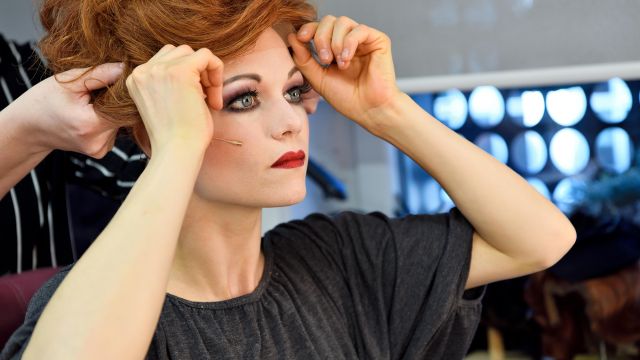Keeping Microphones Hidden

Artie Jones from Factory Sound shares his tips for schools and amateur theatre companies on discreet and crackle free use of microphones.
An incredible amount of research, design and engineering goes into producing every microphone you can see (and those you can’t see) in use on the stage and in studios around the world.
This won’t guarantee perfect performance every time. There are steps you can take to improve performance - or at the very least, prevent audible interference or physical problems that arise from misuse.
Shrinking Graduation
In Primary School performances, lead roles often pass a handheld wireless microphone to each other when there is a line to deliver or a song to sing, while many Secondary School productions will feature headset microphones for the leads.
More sophisticated productions will ‘feature’ microphones totally hidden from the audience, but what is the best way to do this?
Invisible, not impossible
Moving to miniature microphones, often called lavalier microphones, is a step in the invisibility direction, but this usually comes at a cost. A high-performance microphone capsule smaller than your pinky fingernail is not only often priced higher than the other options, there is no guarantee the sound will be great, unless some careful steps are followed (which are often not included in the instruction leaflet).
Securing a miniature lavalier microphone right at the hairline, at the top of the actor’s forehead, is a great place to hide the microphone. It also picks up a very natural sound from the singer, without overloading the capsule via a ‘proximity effect’ (the more pronounced bottom end sound which you may get from a handheld microphone when it is closest to the source).

Other places include elsewhere around the hairline, such as above the ear. Underneath clothing is an option for some actors and costumes, but the horrible sound of clothing rustle on a microphone capsule (which can sound like wireless microphone interference) may then arise.
Tale of the Tape
The essential item in the theatre audio toolkit is tape, and lots of it. Gaffer Tape (the 510-matte variety), Hypoallergenic surgical tape, Lav tape, and specially prepared Undercovers and Stickies are all useful in making sure the capsule stays put, and the actor is comfortable.
Should a microphone need placing under clothing, the UNDERCOVER range of adhesives makes sure that the apparel does not rub against the capsule. In an emergency, try the triangle-tape technique, to secure and surround a lavalier capsule.
Stashing the pack
For each miniature microphone, a wireless transmitter (bodypack) will be required. It’s easy to imagine simply popping it under some clothing, but steps need to be taken to ensure both the integrity of the wireless signal, and also the longevity of the wireless transmitter.
Sweat from an actor’s skin is the number one enemy of sensitive electronics, so care must be taken to avoid direct skin contact. A protective neoprene pouch is often used to safely strap a pack to the waist area. Sometimes an extra layer of protection via a latex sheath is used if the actor is “a sweater”. Moisture seeping into the electronics of a bodypack will decrease the functional lifetime and affect the wireless integrity.
Antennas must be clear of any metals, to avoid ‘detuning’ the wireless signal, and ensure they are allowed to sit in their ‘straight’ position, without an unnatural bend.
 Before Moving to Miniatures
Before Moving to Miniatures
Both the “Primary” and “Secondary” microphones listed above are not without their charm and benefits. For starters, while a handheld microphone has the obvious drawback of taking a performer’s arm away, it does offer the most flexibility for a powerful singer. We can all visualise the action of a singer being able to control how far away from their mouth the microphone capsule sits, depending on how hard they’re belting out a note.
The headset solution turns fixed distance into a feature, by ensuring the microphone capsule is in exactly the same place for the entire performance. In effect, the microphone moves with a performer’s mouth, so every time they turn their head for a stage direction or choreography, the microphone capsule is right there ready to capture the sound without missing a beat.
As always, if wireless microphones are causing more headaches than you can handle, get in touch with an RF specialist to make sure you get looked after.




